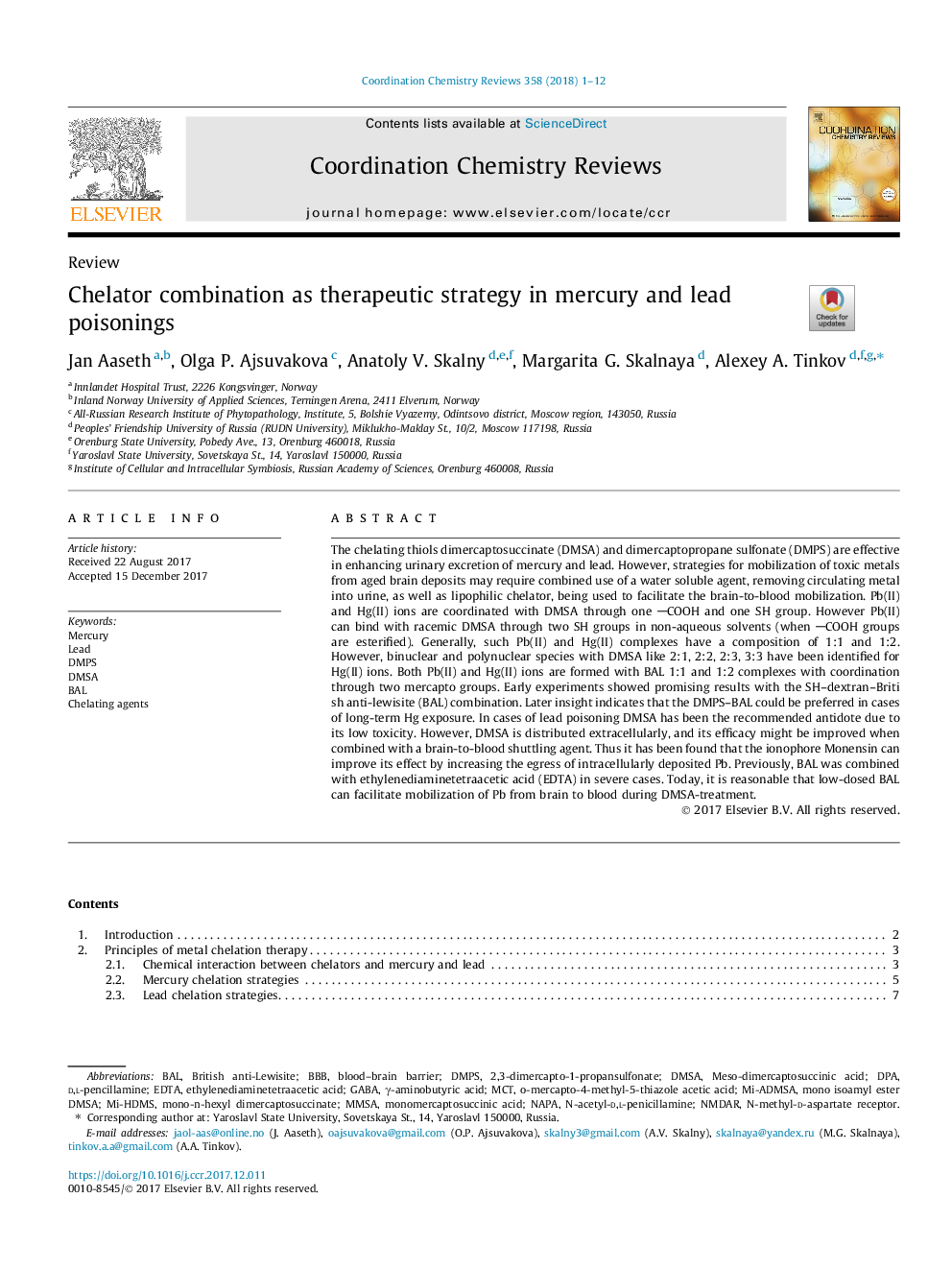| Article ID | Journal | Published Year | Pages | File Type |
|---|---|---|---|---|
| 7747687 | Coordination Chemistry Reviews | 2018 | 12 Pages |
Abstract
The chelating thiols dimercaptosuccinate (DMSA) and dimercaptopropane sulfonate (DMPS) are effective in enhancing urinary excretion of mercury and lead. However, strategies for mobilization of toxic metals from aged brain deposits may require combined use of a water soluble agent, removing circulating metal into urine, as well as lipophilic chelator, being used to facilitate the brain-to-blood mobilization. Pb(II) and Hg(II) ions are coordinated with DMSA through one COOH and one SH group. However Pb(II) can bind with racemic DMSA through two SH groups in non-aqueous solvents (when COOH groups are esterified). Generally, such Pb(II) and Hg(II) complexes have a composition of 1:1 and 1:2. However, binuclear and polynuclear species with DMSA like 2:1, 2:2, 2:3, 3:3 have been identified for Hg(II) ions. Both Pb(II) and Hg(II) ions are formed with BAL 1:1 and 1:2 complexes with coordination through two mercapto groups. Early experiments showed promising results with the SH-dextran-British anti-lewisite (BAL) combination. Later insight indicates that the DMPS-BAL could be preferred in cases of long-term Hg exposure. In cases of lead poisoning DMSA has been the recommended antidote due to its low toxicity. However, DMSA is distributed extracellularly, and its efficacy might be improved when combined with a brain-to-blood shuttling agent. Thus it has been found that the ionophore Monensin can improve its effect by increasing the egress of intracellularly deposited Pb. Previously, BAL was combined with ethylenediaminetetraacetic acid (EDTA) in severe cases. Today, it is reasonable that low-dosed BAL can facilitate mobilization of Pb from brain to blood during DMSA-treatment.
Keywords
Related Topics
Physical Sciences and Engineering
Chemistry
Inorganic Chemistry
Authors
Jan Aaseth, Olga P. Ajsuvakova, Anatoly V. Skalny, Margarita G. Skalnaya, Alexey A. Tinkov,
